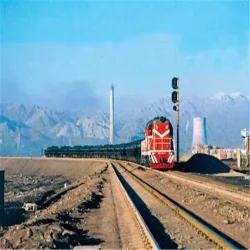Trends and Future of Railway Freight
2024-05-30
Railway freight involves the transportation of goods via the rail network. It is a critical component of the logistics and supply chain industry, offering several advantages over other modes of transportation. Here’s an overview of railway freight, including its types, advantages, and key considerations:
Types of Railway Freight
1. Bulk Cargo: This includes large quantities of raw materials such as coal, iron ore, grain, and minerals. It is typically transported in specialized freight cars like hopper cars or gondola cars.
2. Intermodal Freight: This involves transporting shipping containers or truck trailers on flatcars, facilitating easy transfer between different modes of transportation, such as ships, trucks, and trains.
3. Break Bulk Cargo: This type of cargo includes goods that are transported in bags, boxes, crates, or drums. Boxcars or covered wagons are usually used for this purpose.
4. Automobiles: Specially designed auto rack cars transport vehicles from manufacturing plants to distribution centers.
5. Liquids and Gases: Tank cars are used to transport liquid commodities such as chemicals, petroleum products, and liquefied gases.
6. Refrigerated Goods: Perishable items such as food and pharmaceuticals are transported in refrigerated cars to maintain temperature control.
Advantages of Railway Freight
1. Cost-Effective: Rail transport is often cheaper for long-distance and bulk transportation due to lower fuel costs and the ability to move large quantities of goods at once.
2. Energy Efficiency: Trains are more fuel-efficient compared to trucks, reducing the carbon footprint of transporting goods.
3. Capacity: Trains can carry a larger volume of goods compared to trucks, making them suitable for transporting heavy and bulky items.
4. Reliability and Safety: Railways offer a reliable and safe mode of transportation with lower risks of accidents and delays compared to road transport.
5. Environmental Benefits: Reduced greenhouse gas emissions and lower energy consumption make rail transport a greener option.
Key Considerations for Railway Freight
1. Infrastructure: Efficient rail freight transport requires well-maintained tracks, stations, and terminals, along with advanced signaling systems.
2. Intermodal Connectivity: Effective integration with other transportation modes (trucks, ships, air) is crucial for smooth logistics and supply chain operations.
3. Regulations and Compliance: Adhering to national and international regulations, including safety standards and environmental guidelines, is essential.
4. Cargo Handling: Proper loading and unloading procedures, as well as securing cargo, are important to prevent damage and loss during transit.
5. Technology and Innovation: Adoption of technology, such as real-time tracking, automated systems, and advanced logistics software, enhances efficiency and transparency.
6. Market Demand: Understanding market demand and aligning freight services with the needs of industries can improve utilization and profitability.
Trends and Future of Railway Freight
1. Sustainability Initiatives: Increasing focus on reducing carbon emissions and promoting sustainable practices in rail transport.
2. Digitalization: Integration of digital technologies, including IoT, AI, and big data analytics, for better management and optimization of rail freight operations.
3. High-Speed Freight: Development of high-speed rail networks dedicated to freight transport to reduce transit times.
4. Public-Private Partnerships: Collaboration between government and private sector to invest in and develop rail infrastructure.
5. Global Trade: Expansion of international rail freight routes, such as the New Silk Road, connecting Europe and Asia, enhancing global trade networks.
Railway freight remains a vital component of global logistics, offering an efficient, cost-effective, and environmentally friendly solution for transporting goods across long distances.



